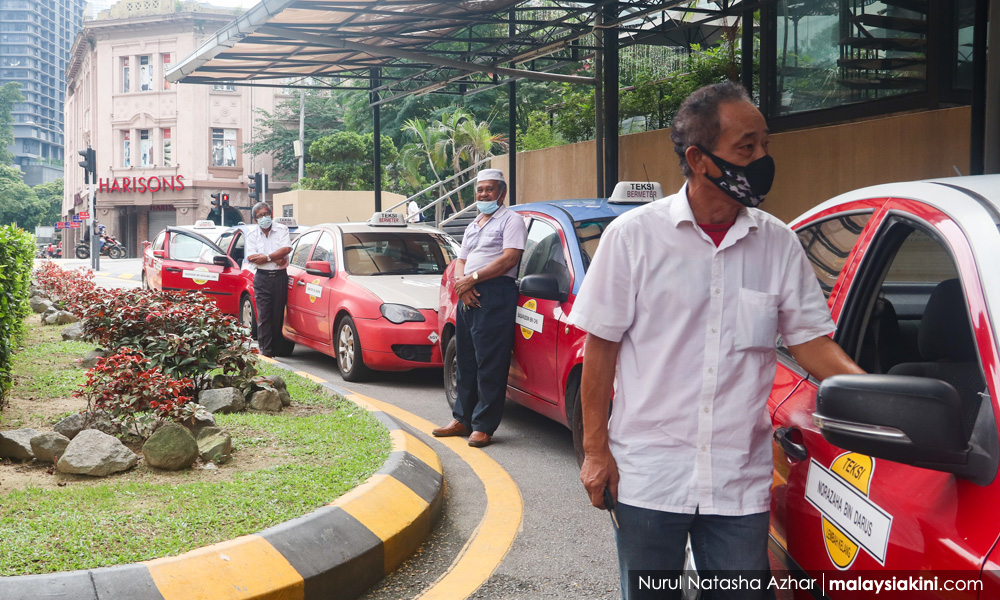Malaysians were given a rude awakening yesterday following reports that the government was mulling further economic curbs should the number of Covid-19 cases increase despite the movement control order (MCO).
Although EU-Malaysia Chamber of Commerce and Industry (Eurocham Malaysia) has clarified that the touted Feb 4 deadline was for illustrative purposes, mitigating a "full shutdown" has been on the minds of some industry managers who reached out to Malaysiakini on whether it was a possibility.
This was in view of the fact that after 13 days of MCO, the number of new Covid-19 cases do not appear to be on the downtrend, even despite the Health Ministry implementing a new directive to reduce testing of close contacts to Covid-19 positive individuals.
Moreover, since Jan 12, the number of Covid-19 cases among those with symptoms in Selangor - Malaysia's most industrialised state - but are not linked to any existing clusters are also on the rise. Those with symptoms are more likely to spread Covid-19 than those who are asymptomatic.
Against this backdrop, this article will revisit economic curbs imposed on March 8 until May 4 last year (MCO 1), where Putrajaya reminded Malaysians of the cost of "full shutdown".
During MCO 1, only "essential" government services were allowed to operate. Some services, such as the renewal of driving licences or road tax, were suspended until April 29 last year. The Immigration Department only opened its Passport Division on May 4 last year.
For MCO 2, virtually all government services are running, albeit some with reduced hours. The popular urban transformation centres, which were closed until June 18 during MCO 1, will be allowed to remain open until 10pm during MCO 2.
During MCO 1, the "essential" economic sector list was initially extremely limited but was gradually relaxed as the weeks went by.

The initial "green lit" list consisted only of finance, utilities, rescue services, ports/airports, postal and courier services, detention centres, health services, waste management, mass media, telecommunications, transport, industries related to defence, food, retail, e-commerce, wildlife management and hotels.
Essentially, any business or factory which wanted to operate during MCO 1 had to apply for permission from the International Trade and Industry Ministry (Miti).
In view of this, a large part of Malaysia's service industry, which made up 55 percent of GDP, and manufacturing and construction industry (about 25 percent of GDP), had to close shop briefly during MCO 1 until they received Miti's green light.
Gradually, factories were allowed to reopen on a case-by-case basis, first with 50 percent staff strength and then 70 percent as the weeks went by.
This caused massive supply chain disruptions for food (some of which went to waste), massive hold up in ports since deliveries can't be made to companies forced to shutdown and most construction and renovation sites fell silent, among other issues.
The lockdowns cost Malaysia's economy dearly, with Q2 2020 GDP change hitting -16.5 percent compared to the same period a year earlier. This was even worse than the Q4 1998 contraction, during the height of the Asian financial crisis.
Currently, the version of the MCO (henceforth MCO 2) that is in place is relatively laissez-faire.
Virtually all types of manufacturers are allowed to continue operating as usual. Construction works, which involved the public infrastructure, critical maintenance or involved on-site accommodations, were all allowed to operate.
Retailers and services such as furniture shops, jewellers, pawnshops, departmental stores, stationary and vehicle retailers were all allowed during MCO 2, unlike its predecessor.
However, since MCO 2 was in force, new Covid-19 clusters continue to emerge from work places throughout the country, particularly factories and construction sites.
There is ample evidence that factory clusters, like other seemingly enclosed clusters such as prisons, can spill over to the community.
Today, the Federation of Malaysian Manufacturers (FMM) issued a desperate plea to members to stem the spread of Covid-19 in the manufacturing sector.
FMM president Soh Thian Lai in a statement noted that out of the 319 active Covid-19 clusters, 99 had to do with the manufacturing sector. - Mkini




No comments:
Post a Comment
Note: Only a member of this blog may post a comment.